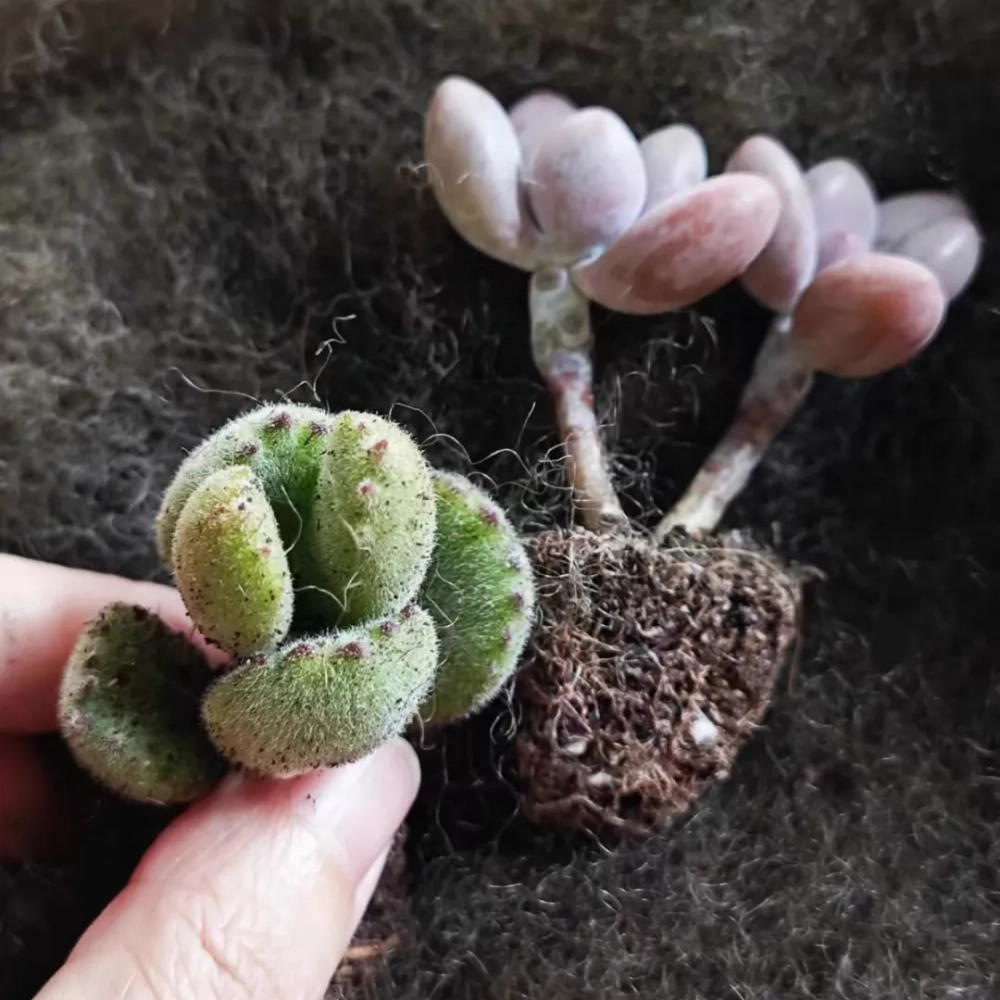Can a succulent plant be saved when it is dying?

Share with
During the maintenance of succulent plants, if they encounter life-threatening conditions such as root rot or leaf wilting, scientifically proven treatment methods can still effectively revive dying succulents.
### I. Beheading Treatment
1. **Tool Sterilization**: Use sterilized gardening shears to ensure an aseptic environment during the operation and avoid secondary infection.
2. **Precision Pruning**: Cut the succulent at a healthy part of the stem, retaining the top growth point and intact leaves, while removing 2-4 basal leaves.
3. **Wound Care**: Place the pruned plant in a cool, ventilated area with 40%-60% humidity, and let it stand for 5-7 days until the wound is completely dry and scabbed.
### II. Water Induction for Rooting
1. **Container Selection**: Use a narrow-mouthed transparent container and fill it with appropriate water, ensuring the stem is 0.5-1 cm away from the water surface to induce rooting through water vapor.
2. **Environmental Control**: Place the setup in a scattered light environment with a temperature of 15-25°C, avoiding direct sunlight that may raise the water temperature. No frequent water changes are needed at this stage; simply add water after roots germinate.
3. **Growth Observation**: Normally, white aerial roots will germinate within 7-10 days. When the roots reach over 1 cm in length, it indicates successful rooting induction.
### III. Transplanting into Pots
1. **Substrate**: Use a 1:1 mixture of peat moss and vermiculite, which balances water retention and air permeability with a pH of 5.5-6.5, suitable for succulent root growth.
2. **Transplanting**: When the roots are 3 cm long, remove the plant and air-dry it for 1-2 hours to ensure dry root surfaces. After planting, water thoroughly and place it in a cool, ventilated area for seedling recovery, which takes about 7-10 days.
### IV. Leaf Propagation
1. **Leaf Selection**: Choose healthy, plump leaves and place them flat on the surface of moist vermiculite or perlite, avoiding inserting them into the substrate to prevent wound infection.
2. **Cultivation**: Maintain 60%-70% humidity and avoid watering; instead, mist the substrate to keep it slightly damp. After about 1-2 weeks, roots and buds will differentiate from the leaf base. Transplant when the new shoots have 2-3 true leaves.
### V. Maintenance Management
1. **Light**: After seedling recovery, gradually increase light duration to 4-6 hours of scattered light daily, avoiding direct强光 (strong light) to prevent burning. Shade 30%-50% in summer.
2. **Watering**: Follow the "dry thoroughly, water thoroughly" principle. Use the weighing method to judge substrate moisture: water when the pot weight decreases to 60% of its original weight.
3. **Pest and Disease Control**: Apply systemic insecticides monthly to prevent pests. Regularly inspect plant conditions, and immediately isolate black-rotted or waterlogged leaves to prevent pathogen spread.
Tagged in :




Leave a Reply